Newtrist Nutritionist high blood pressure diet menu should contain foods that are high in protein, fiber, potassium, and omega-3, and low in carbohydrates, fats, and sodium.
- Early morning drink @ 6:30 am: Beetroot juice
- Breakfast @ 9 am: Jowar roti, cucumber raita, Pomegranate (Half)
- Mid-morning meal @ 11 am: Low-salt green pea-basil soup
- Lunch @ 1 pm: Mint pulav with vegetable salad
- Evening snack @ 4 pm: Green tea with unsalted roasted almonds
- Dinner @ 7 pm: Black bean chapati with roasted vegetables and low-fat turmeric milk
Best Nutritionist in Bangalore
Consult 19-year-experienced Chief Nutritionist Vasanthi, in person at HSR, Koramangala, Bellandur, Haralur, Electronic city, or online across India.
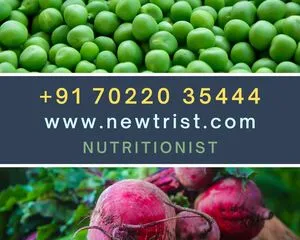
Table of Contents
High Blood Pressure Diet Menu
- Early morning drink @ 6:30 am: Tender coconut water/green tea
- Breakfast @ 9 am: Whole wheat vegetable sandwich with tomato, cucumber, potato, and onion
- Mid-morning meal @ 11 am: Pomegranate juice
- Lunch @ 1 pm: Cooked rice with spinach-potato curry and broccoli-green peas sabzi
- Evening snack @ 4 pm: Avocado salad and cinnamon tea
- Dinner @ 7 pm: Roti with bhindi sabzi and a banana
The high blood pressure diet menu consists of foods high in potassium and fiber and low in sodium and saturated fats. Choose simple ingredients and choose recipes with a few steps like one-pot cooking. Enjoy healthy and delicious meals made at home to reap the benefits of healthy foods.
Avoid frequent dining outside as restaurant foods are often high in sodium. Avoid dried foods like papads, dried fish and meats, pickles, fast foods, noodles, sauces, and frozen foods to lower your blood pressure.
When shopping choose fresh vegetables and fruits instead of preserved and packaged foods. Check the nutritional facts on the labels of packed foods to know the levels of sodium and other nutrients. Avoid processed meats like sausages and hot dogs.
Reduce the amount of salt you add to home-cooked meals. Incorporate herbs and spices to season your meals instead of using salt. Stay active throughout the day. Herbs like basil, garlic, ginger, and spices like cardamom, and cinnamon are effective in reducing high blood pressure. An active lifestyle improves your mood, stamina, and balance.
Ensure that you include a lot of protein-rich foods, fresh produce, whole grains, and fatty fish.
Good breakfast for high blood pressure
A good breakfast keeps you active throughout the day and controls your blood pressure and stimulates the flow of energy. Maintenance of appropriate blood pressure helps in preventing the risk of heart problems, kidney diseases, and brain dysfunctions.
By following the DASH diet rich in healthy foods, your high blood pressure can be kept at bay. A highly nutritious low-sodium breakfast can be effective in managing your hypertension.
Some of the foods that are best to include in your list of healthy breakfasts are:
- Eggs
- Whole grains
- Fresh fruits
- Fiber-rich vegetables
- Fruit smoothies
- Soaked/unsalted nuts
- Oats
- Poha
- Lean chicken
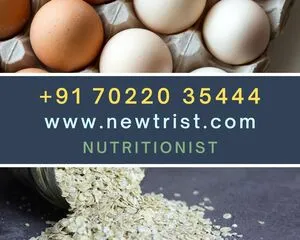
Fruits that increase blood pressure
- Grapefruit and its juice have a negative impact on persons who are under high blood pressure medications.
- Fruits like lime, orange, and grapefruit tend to increase blood pressure.
- All other fruits are good for high blood pressure and an extremely nutritious part of the diet. Fruits serve various benefits for varied health conditions.
Potassium-rich foods to lower blood pressure
Potassium-rich foods to lower blood pressure are
- Tomatoes
- Potatoes
- Peas
- Broccoli
- Carrots
- Beetroots
- Leafy greens
- Mushrooms
- Spinach
- Bananas
- Citrus fruits
- Avocados
- Cantaloupe and honey dew melons
- Low-fat dairy
- Dates and raisins
- Nuts like pistachios and pumpkin seeds
- Salmon and other fatty fishes
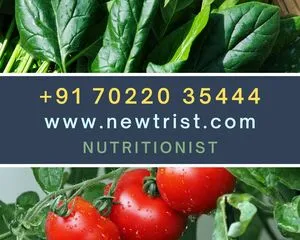
Potassium has a positive effect on blood pressure that reduces the side effects of the intake of sodium. If you have a history of renal problems in addition to high blood pressure, watch your intake of potassium-rich foods.
When kidney functions are impaired, it may be difficult for the kidneys to remove the excess potassium from the body causing the build-up of potassium in the bloodstream. A discomfort in the stomach, irregularity in heart rhythms, and fainting may result from high potassium levels.
Potassium lowers the risk of stroke, kidney problems, and heart diseases. Choose foods rich in potassium to meet the recommended intake of daily potassium levels. Try to get the nutrients from natural sources instead of supplements.
Our expert nutritionists guide you on the appropriate potassium intake and help you overcome the effects of high blood pressure.
List of good fish for high blood pressure
Fish are good sources of omega-3 fatty acids, a type of polyunsaturated fat that helps to lower blood pressure. Oily fish like salmon help in preventing the accumulation of cholesterol in the walls of the heart, thus promoting the free flow of blood through the blood vessels. This helps in lowering blood pressure and its related side effects.
Choose freshwater fish that contains low levels of sodium than saltwater fish. Oily fishes help in the relaxation of blood vessels that keeps high blood pressure at bay.
Some of the fish to include in the diet of a hypertensive patient are
- Indian salmon
- Rohu
- Katla
- Silver/White pomfret
- Hilsa
- Pink perch
- Catfish/Singhara
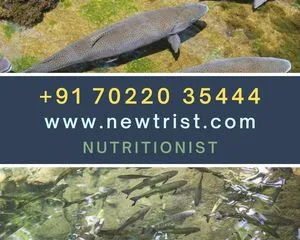
Indian salmon provides a good source of omega-3 and 6 fatty acids and essential amino acids. Indian salmon contains 22-26 gm of protein per 100 gm of the fillet. Proteins help in unnecessary weight gain and aid in the management of hypertension.
Rohu supplies the body with omega-3 fatty acids, proteins, and vitamins like A, B, and C. ensure that you include fish at least once a week. This low-mercury fish is a safe option for fish lovers.
Katla is a common freshwater fish found in lakes and rivers in the northern part of India.
Pink perch is a small fish found in common freshwater. Due to its low-fat content, it is called lean fish and serves as a great addition to a healthy diet.
Silver/white pomfret is commonly found in the Indian Ocean and South Asia. It provides plenty of omega-3 fatty acids and is delicious.
Hilsa is a popular Bengali fish found in Andhra, Odisha, West Bengal, Assam, and Gujarat. It is one of the costliest fishes in India, so be careful not to add Hilsa very often to your menu list.
Catfish provides plenty of proteins, omega-3, omega-6 fatty acids, and choline.
Meal Plan for High Cholesterol and High Blood Pressure
- Early morning drink @ 6:30 am: Tomato juice
- Breakfast @ 9 am: Oats Khichdi with vegetables and green tea
- Mid-morning meal @ 11 am: Spring onion potato soup
- Lunch @ 1 pm: Brown rice with salmon fish curry and a few slices of papaya
- Evening snack @ 4 pm: A handful of roasted peanuts
- Dinner @ 7 pm: Finger millet roti with mushroom sabzi and banana
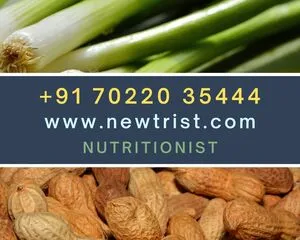
A meal plan for high cholesterol and high blood pressure consists of eating a healthy diet, foods low in sodium and cholesterol, managing stress, regular physical activity, and maintaining a healthy weight. High cholesterol and high blood pressure increase the risk of many lifestyle disorders and put your life in danger. Healthy food habits help in managing your cholesterol and blood pressure levels.
Not eating enough magnesium-rich foods and sea foods associated with hypertension.
DASH diet plan for high blood pressure
DASH (Dietary Approaches to Stop Hypertension) diet is highly recommended for hypertensive patients as the diet comprises protein, fiber, calcium, potassium, magnesium, and iron. DASH diet is usually low in sodium that allows only 2,300 mg of sodium per day as the recommended daily allowance.
The flexibility of the DASH diet helps in creating heart-healthy food habits. Restriction of saturated fats and full-fat dairy products helps the DASH diet more adaptable to life. Track the number of calories you eat and drink and watch out for your portion sizes.
Limit your intake of processed foods, packaged foods, and canned foods as these foods account for most of the sodium intake. Check for the sodium content of foods and opt for low-sodium options.
In addition to diet, exercises play a main role in controlling blood pressure. 30 minutes of moderate exercise helps to lose extra weight and maintain optimal blood pressure.
Whole grains and pulses, fruits and vegetables, eggs, animal proteins, and foods rich in omega-3 fatty acids are part of the DASH diet.
15 Foods to avoid with high blood pressure
Heart attack, stroke, and some cardiovascular diseases result from untreated high blood pressure and uncontrolled food habits. Regular check-ups and changes in eating patterns can control blood pressure.
- Coffee and caffeinated drinks
- Foods high in saturated and trans fats
- Artificial sweeteners
- Sodas and junk foods
- Cheese and Margarine
- Tomato sauce
- Chilli sauce
- Salad dressings
- Vinegar that we add to the foods makes the healthy foods unhealthy
- Pickles and papads
- Chocolates
- Candies
- Cakes and pastries, in the long run, may lead to obesity which in turn has a greater influence on blood pressure
- Smoked and processed foods such as dried fish, bacon, and sausages are rich in sodium
- Packed foods such as chips, salted nuts, and crackers
Diet and exercise for high blood pressure
Diet and exercise for high blood pressure is the best treatment for hypertension.
A diet for high blood pressure should include healthy eating habits such as high fiber, high protein, low fat, low sodium, and high potassium, and a diet enriched with essential vitamins and minerals. The DASH diet is perfect for those with hypertension as it contains most of the healthy foods to manage high levels of blood pressure. It significantly reduces salt consumption which results in lowering blood pressure and improves the cardiovascular health of individuals with hypertension.
Medications alone won’t be an effective strategy in controlling blood pressure. Modifications in the diet in conjunction with medications help in achieving the nutritional goals and effective management of blood pressure.
Regular exercise help to lower high blood pressure. Exercises can be in the form of brisk walking, jogging, cycling, swimming, or your favorite sport. Exercise prevents blood pressure from rising further. To start with, follow moderate-intensity workouts and gradually increase the intensity levels. A physical workout of 30 minutes per day would be beneficial to manage high levels of blood pressure.
Strength training also helps in lowering blood pressure. Engage yourself in strength training at least twice a week.
Apart from diet and exercise, regular sleep and reduced stress can have a positive impact on hypertension. A warm shower for 15 minutes can help you relax. Yoga and meditation can calm your mind and help you lead a stress-free life.
FAQs
Are carrots good for high blood pressure?
Carrots are high-fiber vegetables that contain rich sources of phenolic compounds like chlorogenic acid, p-coumaric acid, and caffeic acid that promote the relaxation of blood vessels and decrease inflammation. Carrots can be either consumed raw or in cooked form to reduce blood pressure. Consuming carrots in raw form is considered beneficial to lower high blood pressure.
Are grapes good for high blood pressure?
Grapes provide a good source of flavonoids and potassium which helps in lowering hypertension. the water content of grapes helps in reducing the effect of sodium in high blood pressure patients. With regular consumption of any form of grapes, a reduction in blood pressure and better cardiac function is observed. Have a bowl of washed and clean grapes to lower the high blood pressure.
Is avocado good for high blood pressure?
Avocados are listed as a “Wonder fruit” which can do wonders for the regulation of your blood pressure. Avocados are rich in potassium and oleic acids which help to reduce high blood pressure and cholesterol levels. Avocado eases the tension in the walls of the blood vessels which allows the free flow of blood reducing the force of blood flow.
Are blueberries good for high blood pressure?
Blueberries contain good amounts of polyphenols and antioxidants that help reduce high blood pressure levels. An improved blood vessel function and reduced systolic pressure are observed with the I take of blueberries. Blueberries widen the arteries and increase blood flow marking a reduced risk of cardiovascular diseases.
Is chicken good for high blood pressure?
Chicken is one of the best foods for high blood pressure. Consuming chicken promotes cardiac health which aids in the regulation of blood pressure levels. The protein found in the chicken is broken down into peptides (smaller forms of proteins) in the stomach which possess blood pressure-lowering properties similar to blood pressure medicines. The lowering effect lasts for 4 hours when the chicken breast is consumed and it is for 24 hrs for chicken legs.
Is the keto diet good for high blood pressure?
The Keto diet is good for people with high blood pressure. The body releases less insulin when the body is in a keto state which helps to lower inflammation. A small reduction in weight with the keto diet can lower the risk of cardiovascular diseases and bring changes in blood pressure. The kidneys undergo a diuretic effect where the water and excess salt is being excreted which causes a drop in blood pressure levels.
Is oatmeal good for high blood pressure?
Oats are high-fiber foods with low sodium content. Consuming oats regularly helps in reducing systolic and diastolic pressure, and cholesterol levels and improves digestive health. Choose the less processed variety of oats instead of instant oats. Oats can be incorporated into the meal as porridge or dosa/idly batter, oats vegetable upma, or whole wheat pancakes.
Is orange juice good for high blood pressure?
Unsweetened orange juice is an excellent beverage to manage blood pressure effectively. The potassium content of orange juice and its antioxidative and anti-inflammatory properties helps in reducing high blood pressure and bad cholesterol levels. Orange juice improves the immunity and overall health of a person. The vitamin C content of orange juice helps in reducing the risk of hypertension.
Is peanut butter good for high blood pressure?
Peanut butter can be consumed in moderate quantities for high blood pressure patients. The magnesium and potassium content of peanut butter can help in controlling blood pressure, but it is a high-calorie and high-fat food that should not be over-consumed.
Hydrogenated oils are used in the preparation of commercially available peanut butter to prevent the separation of liquid from the butter at room temperature. These hydrogenated oils can be hazardous to health as they are rich in saturated fats.
Is yogurt good for high blood pressure?
Yogurt is a nutrient-dense food that is a good source of vitamins and minerals like potassium and calcium that aid in the regulation of high blood pressure. The potassium flushes out the salt from the body which helps in lowering blood pressure.
Yogurt is rich in probiotics and beneficial bacteria that ensure the release of proteins that helps in the regulation of blood pressure. Choose low-fat yogurt to be free from the side effects of high cholesterol levels.
What are the best nuts for high blood pressure?
Nuts are good sources of L-Arginine which consist of blood pressure-lowering properties. Nuts like pistachios, almonds, walnuts, cashews, and pumpkin seeds are the best for high blood pressure. Among these, pistachios (unsalted) top the list to be effective in lowering blood pressure.
Nuts contain healthy fats which promote the regulation of cholesterol levels and the prevention of heart diseases. Consume nuts especially unsalted ones in moderation as nuts are very high in calories.
What are good snacks for high blood pressure?
Hypertensive patients have a wide range of choices of snacks to munch on. Be selective about foods low in saturated and trans fats and low in excess sugars and oils. Give importance to foods that are rich in fiber, vitamins, and minerals and that are digestion-friendly.
· Fruit salad
· Vegetable salad
· Roasted nuts
· Boiled eggs
· Roasted makhana
· Few pieces of dark chocolate
· Dry fruits
· Avocado salad
· Poha flakes with jaggery
· Low-fat yogurt
Will chocolate increase blood pressure?
Chocolates are rich in flavonoids and polyphenols which may lower the risk of heart disease and blood pressure. Dark chocolate helps in the relaxation of blood vessels and improves blood circulation.
Limit chocolate consumption to a few pieces as the caffeine content of chocolates tends to temporarily rise the blood pressure as that of coffee. Be cautious with chocolate consumption as it is high in calories.
Will garlic help lower blood pressure?
Garlic is being used as a natural remedy to lower blood pressure. Garlic consumption reduces systolic and diastolic pressure up to 11.2 mm Hg. The antioxidant and anti-inflammatory properties of garlic are responsible for the prevention of a rise in blood pressure levels.
Garlic prevents the formation of angiotensin II and stimulates the production of endothelial nitric oxide which is responsible for the vasodilation of blood vessels that helps in lowering hypertension.